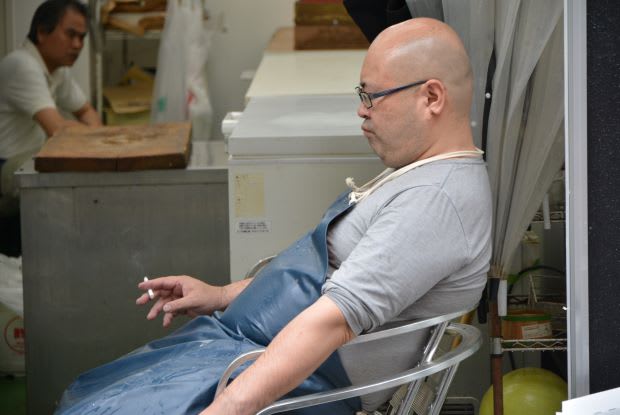Table of Contents
III. Medications for Hair Loss
Millions of people in the United States experience baldness, but few may understand the real cause behind their thinning hair. Contrary to popular belief, balding is not a natural sign of aging. Thinning hair is not an inevitability, but more accurately, a combination of genetic and environmental factors. Women may also experience baldness, but it affects a smaller portion of the population.
Male pattern hair loss can occur in men of any age, but you may be able to save your thinning locks with early intervention and the proper medications. Prescription medications like Avodart, Propecia, and minoxidil may be prescribed to stop hair loss and promote hair growth. Read on to learn more about hair loss treatments and types. [1]
Several types of hair loss may occur. The most common type is androgenic alopecia, but all types involve a disorder caused by an interruption in the body's hair production cycle. Hair loss may occur anywhere on the body, but the scalp is the most commonly affected area. Over 100,000 hairs on the scalp cycle through the hair growth process, making it more susceptible to hair loss disorders. There are three phases of hair growth: the anagen phase, the catagen phase, and the telogen phase. In the first phase, the hair is growing actively, which can last for years. In the catagen phase, the hair stops growing and separates from the follicle, lasting for ten days. The follicle then rests in the telogen phase for a few months and then falls out. [1] The types of hair loss include: Androgenic alopecia is the scientific name for male pattern baldness. This is the most common type of hair loss in men, affecting more than 50 percent of men over 50 years old. Generally, it is characterized by a receding hairline and hair loss on the top and front of the head. Hair loss usually starts above the temples and continues around the top of the head, sometimes leaving a ring of hair along the bottom of the scalp. This type is caused by a genetically determined sensitivity to dihydrotestosterone (DHT), which shortens the hair cycle and causes the hair to fall out. The susceptibility to DHT occurs due to a combo of inherited genes from the mother and father. [2] This type occurs when many follicles on the scalp enter the resting phase (telogen) but never progress into the growth phase. If this occurs, hair will fall out on the scalp, and new hair growth will noticeably decrease. Complete baldness is uncommon with telogen effluvium, but your hair may appear thin at the temples and crown. Childbirth, surgery, iron deficiency, fever, acne medications, and oral contraceptives may trigger this type of hair loss. Hair loss usually begins around three months after one of these events. Your hair will likely regrow in a few months, but you may want to talk to your doctor to diagnose the reason behind your hair loss properly. [1] Alopecia areata is a type of hair loss caused by an autoimmune condition. This type of condition occurs when the body's immune system mistakenly attacks its structures – hair follicles, in this case. This causes the hair to fall out and may prevent new hair from growing. The hair may begin to fall out in patches and is not painful. Your eyelashes may also fall out, which can progress into alopecia totalis (complete hair loss). This type is often treated with a hair growth medication prescribed by your doctor. [1] You may also experience hair loss if your hair strands are thinner and weaker than normal. This makes them more vulnerable to hair breakage, which can lead to increased hair loss. This hair does not break off at the follicle but along the hair shaft. Over time, this can cause hair thinning and the appearance of many small and brittle hairs. You may need to change your hair care habits to reverse hair shaft abnormalities. Loose anagen syndrome, trichotillomania, and traction alopecia are the most common types of hair shaft abnormalities. [1] If you notice you're losing more hair than normal, you may want to book an appointment with your doctor. DHT may cause hair loss in the case of androgenic alopecia, but it could be something more complicated or dangerous. Before a diagnosis, your doctor will likely do the following: Once your type of hair loss has been diagnosed, an effective treatment plan can be established. Your doctor may be able to stop further hair loss or slow it with the right prescription treatment plan. There is no cure for baldness, but minoxidil and finasteride (Propecia) are the most common medications for hereditary baldness. Loniten, a brand-name version of minoxidil, can help regrow your hair. Patients can see improvements around six months after beginning minoxidil. This medication is a vasodilator, which widens the blood vessels and delivers more blood to the scalp. Propecia works differently by blocking DHT formation, the testosterone hormone that inhibits hair growth in men. In other cases, doctors may prescribe Avodart (dutasteride) for hair loss. This is an off-label use for Avodart because it is used to treat benign prostatic hyperplasia (BPH). Avodart works in the same way as Propecia, by blocking DHT. Talk to your doctor to discuss the best treatment for your hair loss. [3] The content in this article is intended for informational purposes only. This website does not provide medical advice. In all circumstances, you should always seek the advice of your physician and/or other qualified health professionals(s) for drug, medical condition, or treatment advice. The content provided on this website is not a substitute for professional medical advice, diagnosis, or treatment.
Types of Hair Loss
a. Androgenic Alopecia

b. Telogen Effluvium
c. Alopecia Areata
d. Hair Shaft Abnormalities
Diagnosing Hair Loss

Medications for Hair Loss
